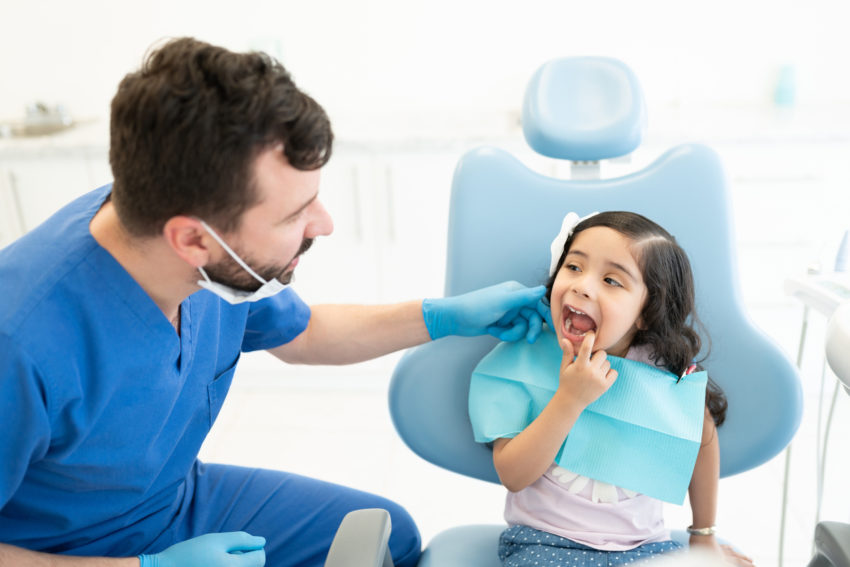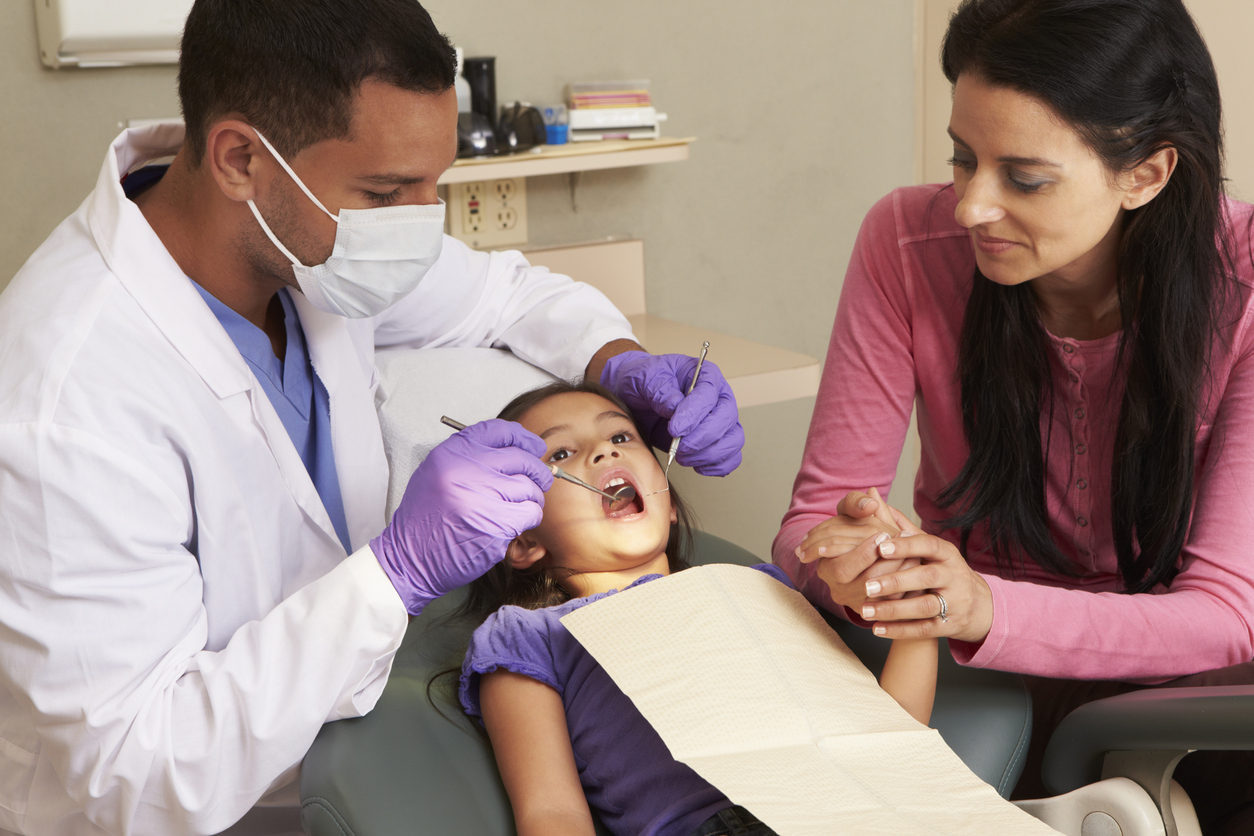
Share On Social!
Did you know that 1 of 2 Latino kids have cavities in their teeth?
More Latino children and young adults ages 2-19 have cavities (57%) than their Black (48%), Asian (45%), and White (40%) peers.
Cavities are not the only dental health disparity facing Latino children, either. They experience high rates of untreated tooth decay, poor rates of dental health care coverage, and more.
“While the gaps have narrowed for some indicators, they have widened for many others, and equity in oral health status remains elusive. We can and should do better,” Dr. Scott Tomar of the University of Florida College of Dentistry, who analyzed 2019 CDC data, told Pew Charitable Trusts.
To get to the bottom of oral health among Latino children, we first have to understand the disparities, the reasons behind them, and potential solutions.
Update 3/8/21: Chicago pediatrician Dr. Geisel Collazo Garcia discussed Latino children’s oral health on the Spanish-language Las Doctoras Recomiendan podcast with Drs. Angela Castellanos and Edith Bracho Sanchez. Listen to the episode and find out more about the podcast!
What Are the Dental Health Disparities Facing Latino Kids?
On one hand, oral health is improving.
The 2019 CDC report “found a decline in recent years in the prevalence of untreated tooth decay in the primary teeth of Black and Mexican American children,” according to U.S. News & World Report.
But there is bad news. The report also highlighted several important dental health disparities:

For children ages 2-5: “During 2011-2016, prevalence of caries and untreated decay was about 1-2 times higher among Mexican American, non-Hispanic black, and poor and near-poor combined children compared to non-Hispanic white and not-poor children.”
Among children ages 6-8: “During 2011-2016, prevalence of caries and untreated decay was higher among Mexican American (caries: 73%, untreated decay: 20%), non-Hispanic black (54%, 22%), and poor and near-poor combined (62%, 22%) children compared with non-Hispanic white (44%, 13%) and not-poor (40%, 11%) children.”
For children and young adults ages 12-19: “During 2011–2016, prevalence [of caries] was higher among Mexican American (69%) and poor and near-poor combined (65%) adolescents than among non-Hispanic white (54%) and not-poor (49%) adolescents…prevalence of untreated decay was higher among non-Hispanic black (20%) and Mexican American (21%) adolescents than among non-Hispanic white (16%) adolescents.”
What Are the Dental Health Disparities Facing Latino Adults?
The dental health situation isn’t much better for adults.
Overall, 26% of Americans ages 20-64 have untreated tooth decay.
However, the rate rose to over 40% for each of the following groups: Latinos, Blacks, low-income, low-education, and current smokers, according to the 2019 CDC report.
“The prevalence of untreated decay among older adults who were Mexican American, non-Hispanic black, or poor and near-poor combined; who had less than a high school education; and who were current smokers ranged from 29% to 36%, higher than the estimates of 10% to 14% for their respective reference groups within each sociodemographic characteristic,” according to the CDC report.
Why Do Latinos Suffer These Dental Health Disparities?
Two big reasons: a lack of knowledge and access to oral health care.
“And these two feed each other. Since Latino and Black adults tend to have less information about dental care, they go to the dentist less often, and that leads to expensive problems later on,” according to LAist. “The hefty price tag associated with dental work, in turn, dissuades them from going to the dentist to begin with.”
People of color struggle to access preventive services and dental treatment, and have far greater rates of oral disease, according to U.S. News & World Report.
 Latinos especially face barriers to dental health.
Latinos especially face barriers to dental health.
These include a lack dental insurance (less than 17.5% of Latinos have it), high cost of care, lack of oral health knowledge, and lack of bilingual dentists, Salud America! reports.
This is a why most kids have their first dental visit by age 7. But for Latinos, it’s age 16.
“Unfortunately this disparity is something that carries throughout life, since dental care starts at an early age and impacts the development of the teeth and gums,” says Dr. Leslie Townsend of Jefferson Dental Clinics.
This situation is worsening amid COVID-19-related job losses.
“[California, for example, has] some 2 million people who lack legal immigration status, leaving their health care options severely limited at a time when many are without work,” according to LAist.
What Can Advocates Do to Reduce Dental Health Disparities for Latinos?
Further improving access to dental health care will help, experts say.
For example, between 1996 and 2015, a near-doubling of the percentage of children with public dental insurance resulted in a 15 percentage point increase to 88% in any dental coverage among all children, the CDC reports.
“The range of covered services among children and adults with public insurance is a key factor affecting dental care use. Public dental insurance coverage among children offers comprehensive dental benefits (e.g., diagnostic, preventive, and restorative services), whereas coverage for adults is commonly limited to emergency services only,” according to the CDC. “Cost remains a major barrier to receipt of dental services across the life span and is the most common reason among working-age adults for not seeking dental care.”
The CDC also suggests providing preventive dental health services in primary medical care, school, and community settings. They also recommend promoting dental visits for young children at risk of early childhood caries.
States can help reach Latinos and other communities of color, too.
“These efforts include removing unnecessary state-level rules that block dental hygienists from working in community settings and expanding the use of dental therapists, who can offer basic restorative care at a lower cost to the delivery system,” wrote Jane Koppelman of the Pew Charitable Trusts’ dental campaign.
Improving the diversity of dental care providers also can help.
“Latino dental providers are drastically underrepresented in the dentist population and those that are in practice shoulder a disproportionate share of dental care for minority and underserved communities,” wrote Vivian Vasallo of the Delta Dental Institute in a Salud America! guest blog post.
“It is important that we both celebrate the legacy of Latino working in the field and push for better representation of Latinos in health care professions.”
What Can Parents Do to Reduce Dental Health Disparities for Latino Children?
Here are four ways parents can help prevent children’s cavities and promote dental health.
 Also, the American Academy of Pediatrics’ Campaign for Dental Health has new bilingual resources to help parents.
Also, the American Academy of Pediatrics’ Campaign for Dental Health has new bilingual resources to help parents.
This includes a bilingual tooth-brushing technique video and graphic, and four bilingual tip sheets that tackle oral health promotion across the lifespan.
“Preventing tooth decay is more important than ever,” according to the Campaign for Dental Health. “These resources will help you help families with tooth brushing technique and healthy habits for everyone, from babies to grandparents.”
Explore More:
Healthcare AccessBy The Numbers
142
Percent
Expected rise in Latino cancer cases in coming years



